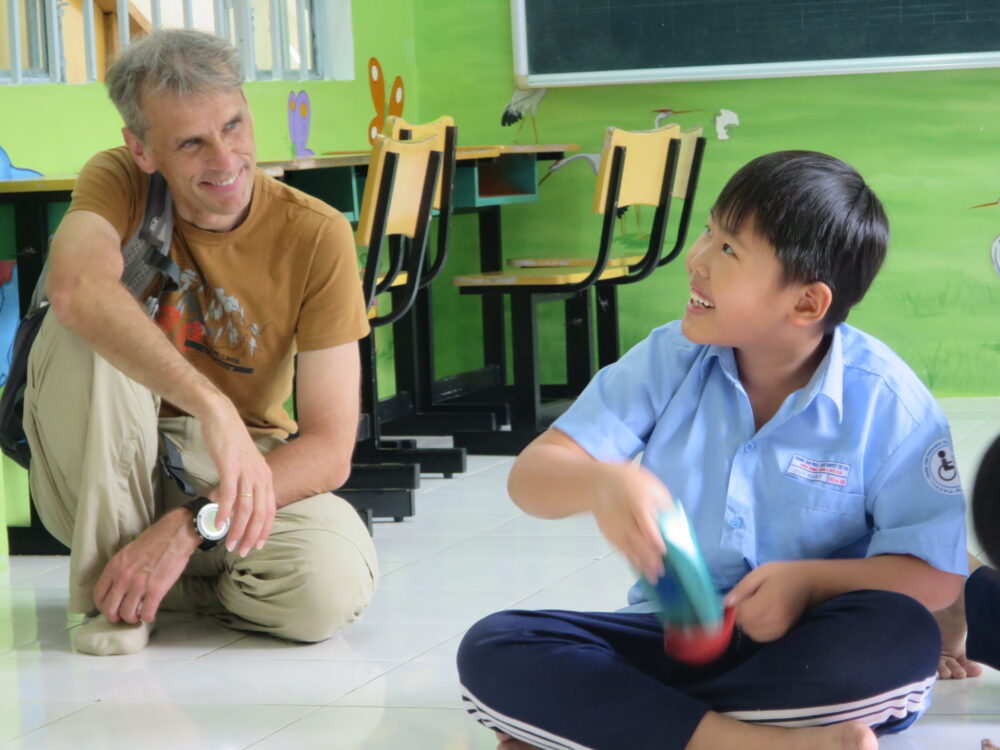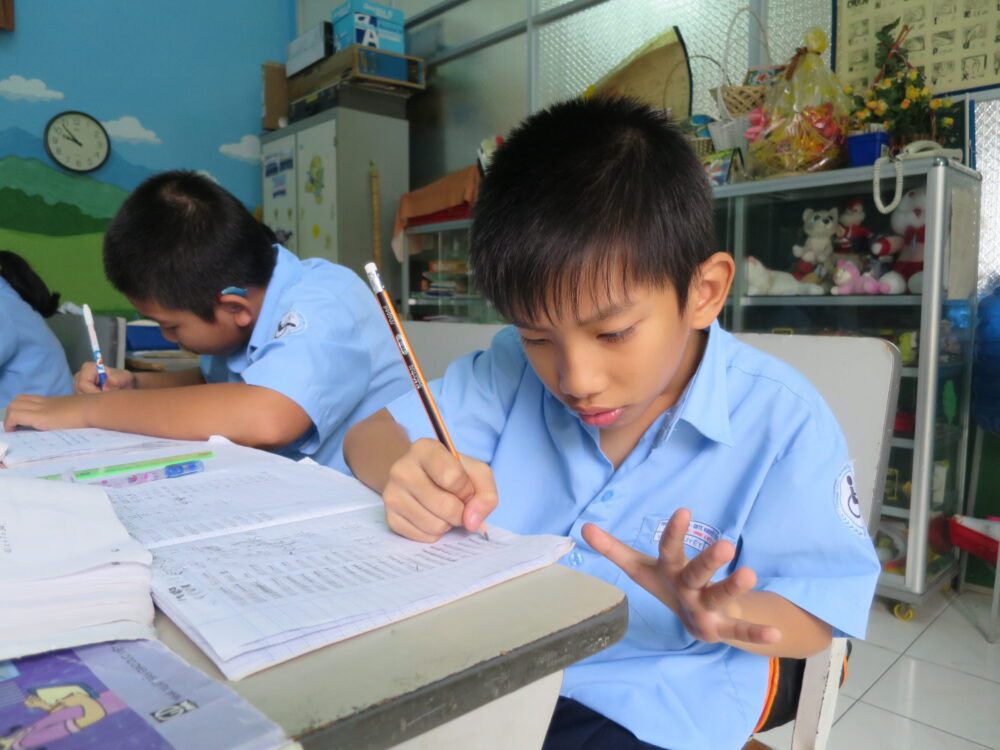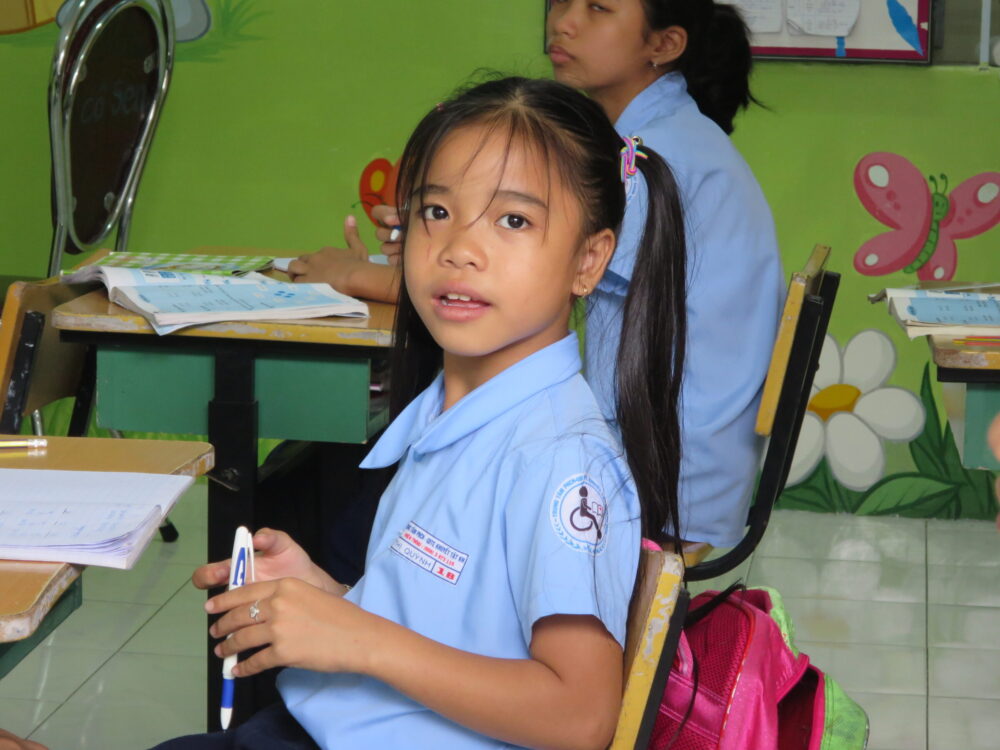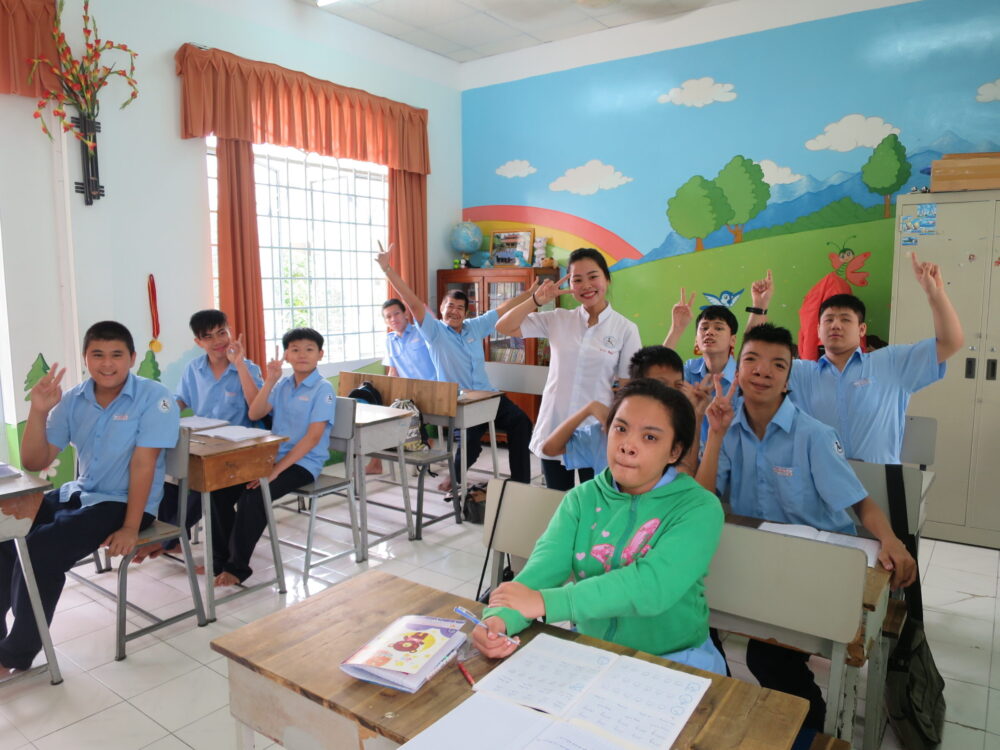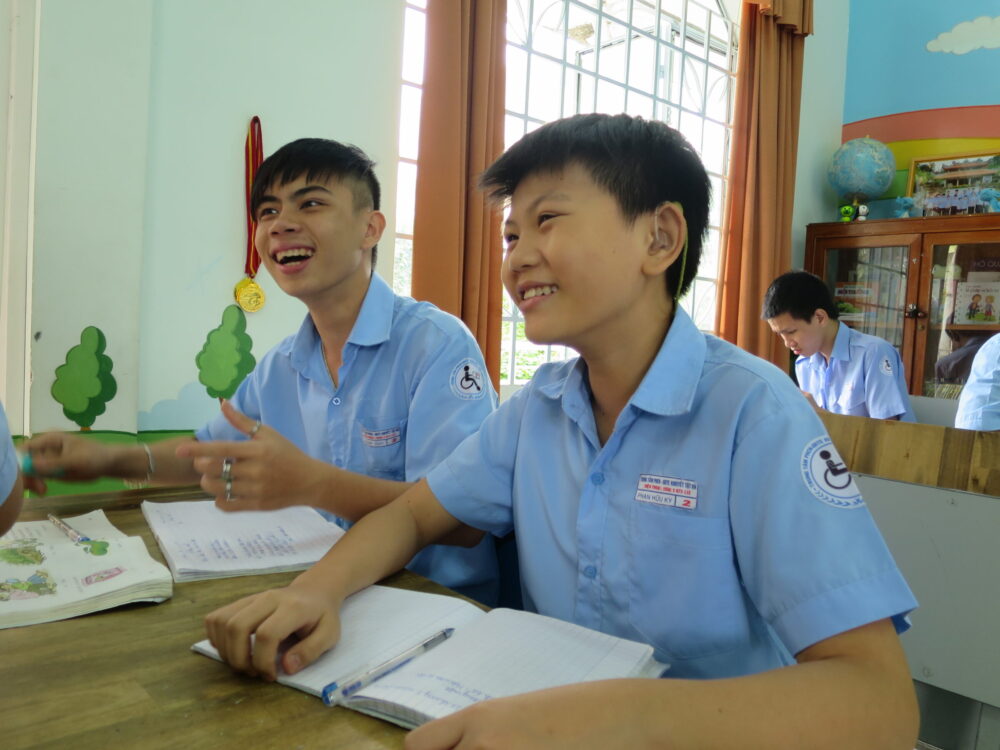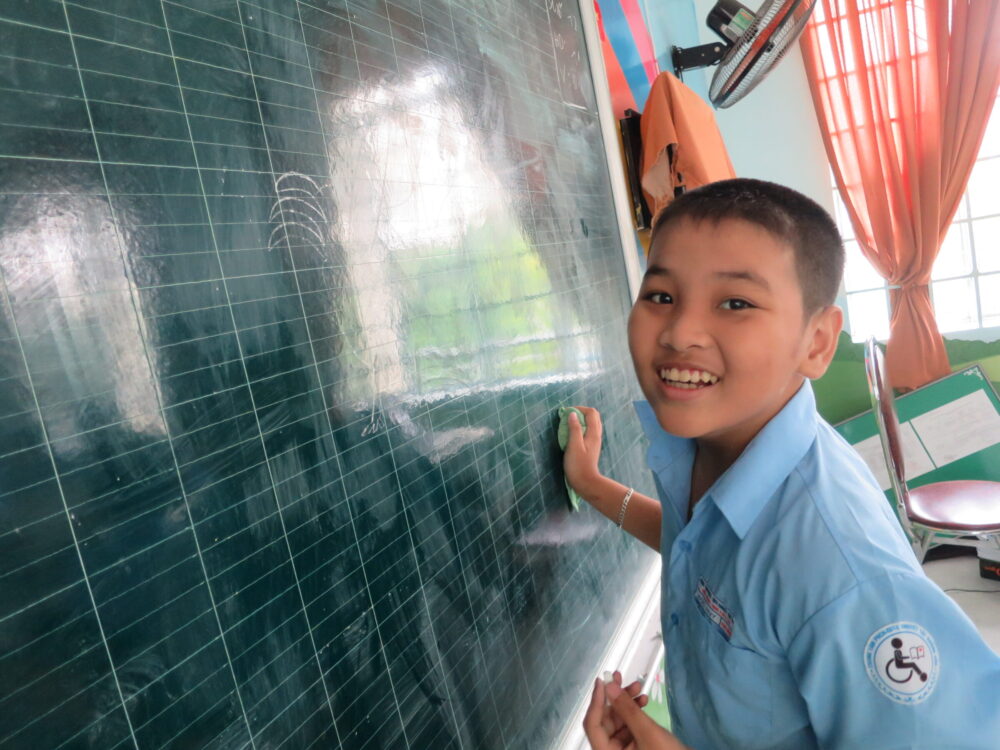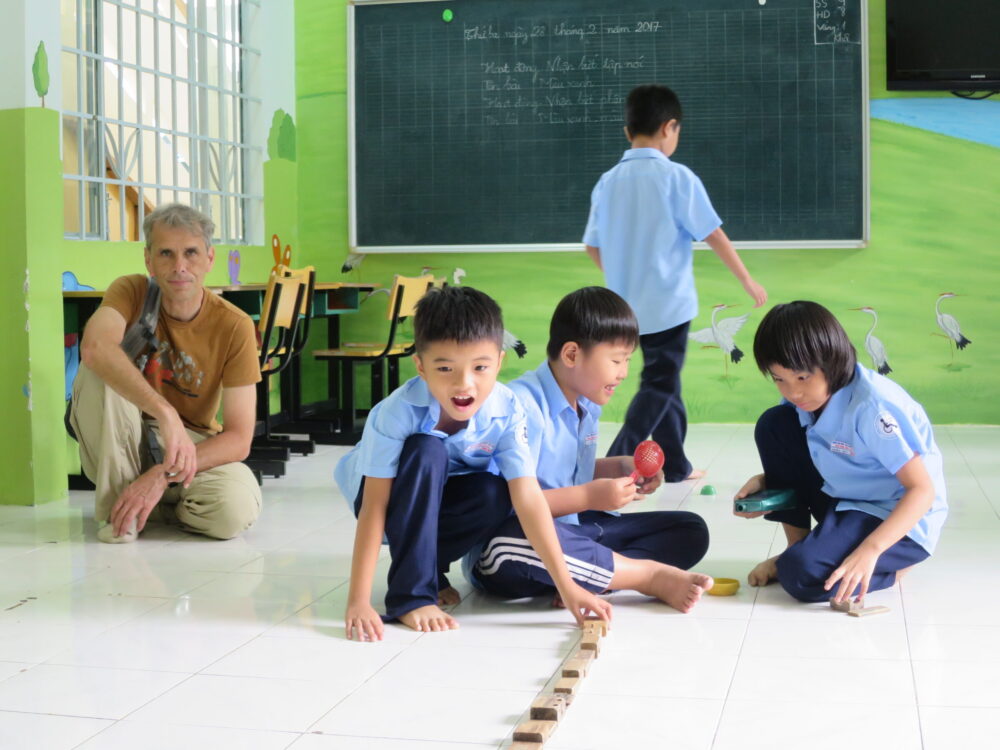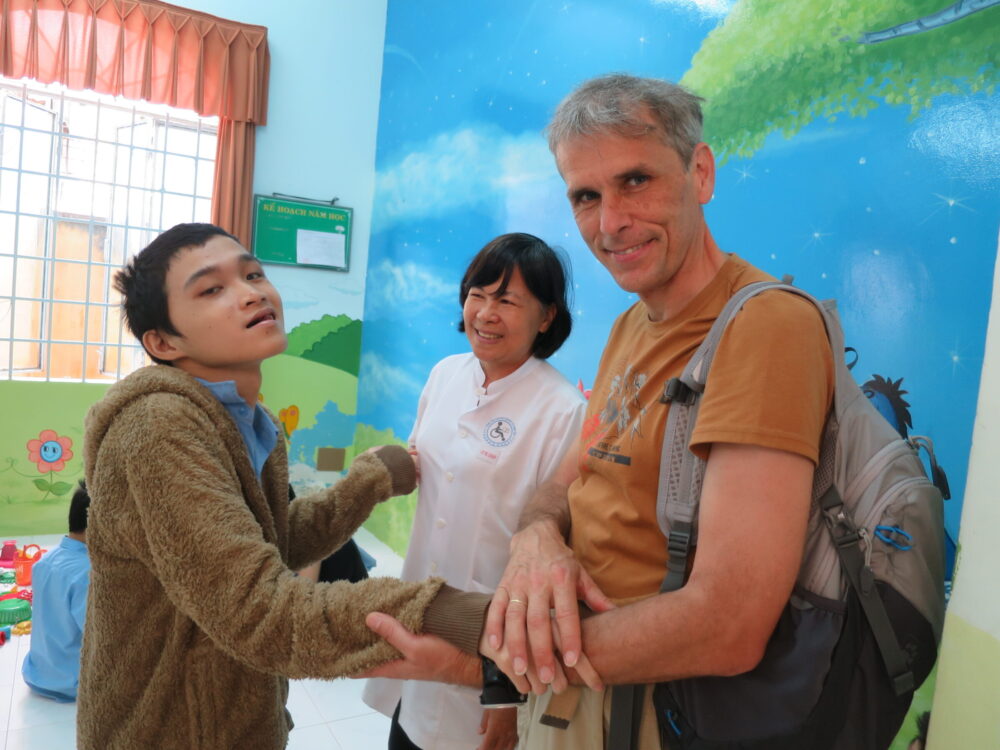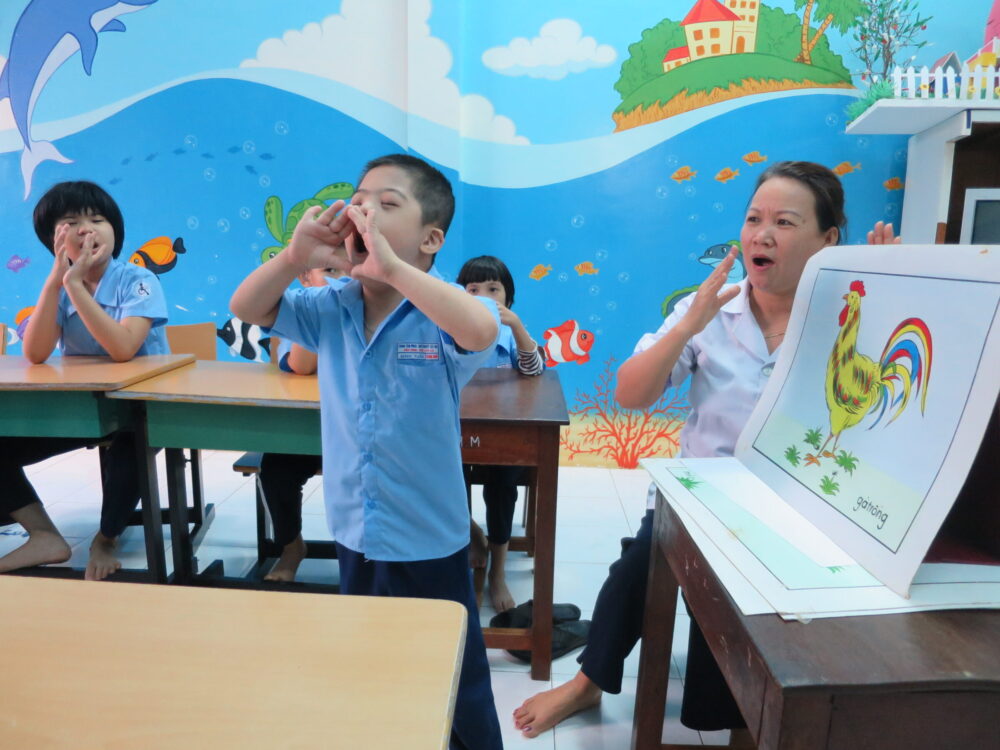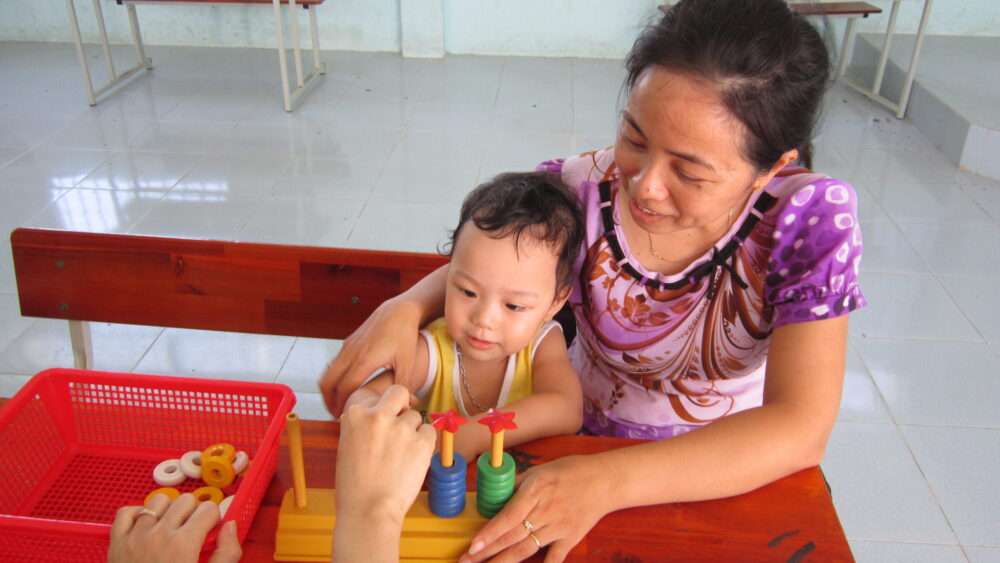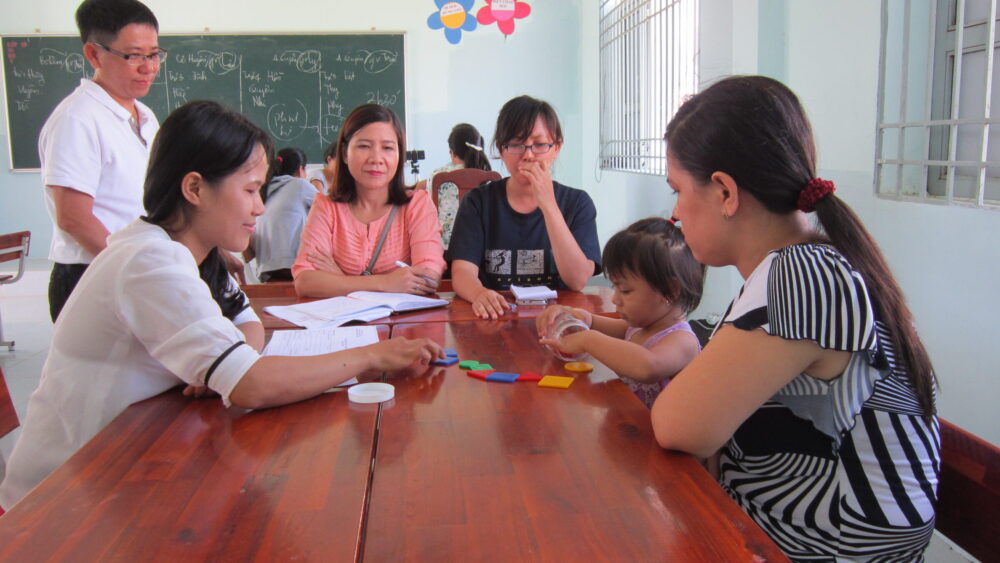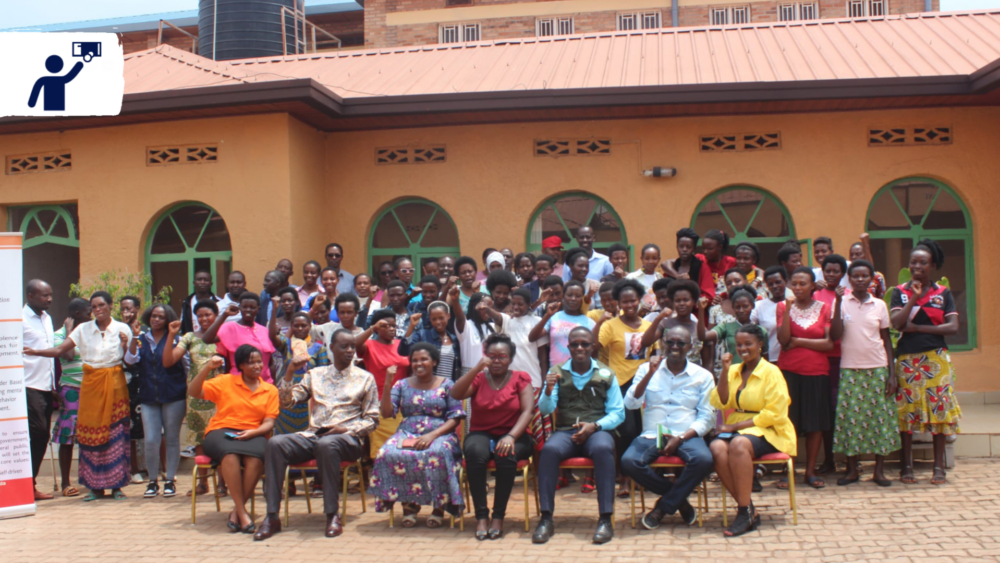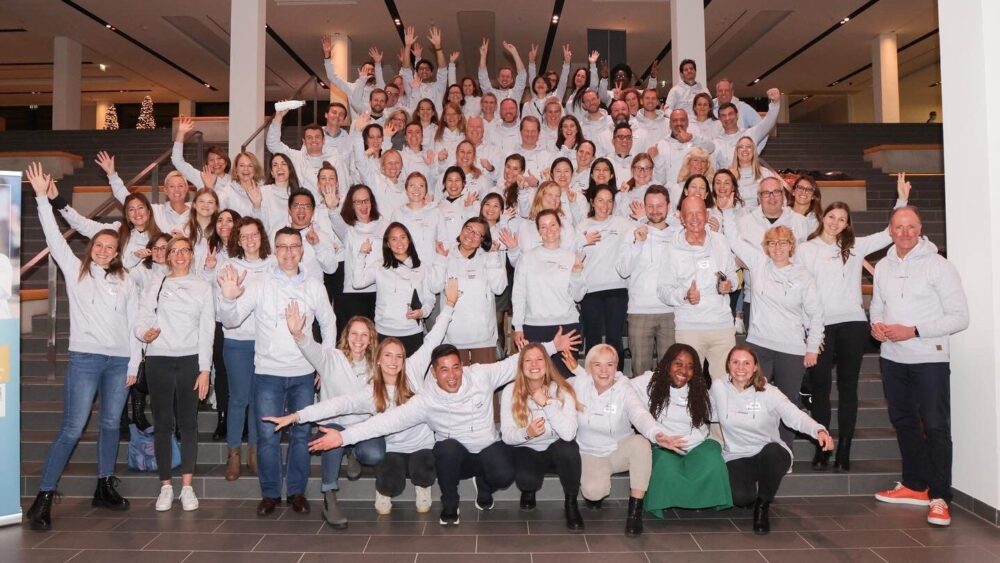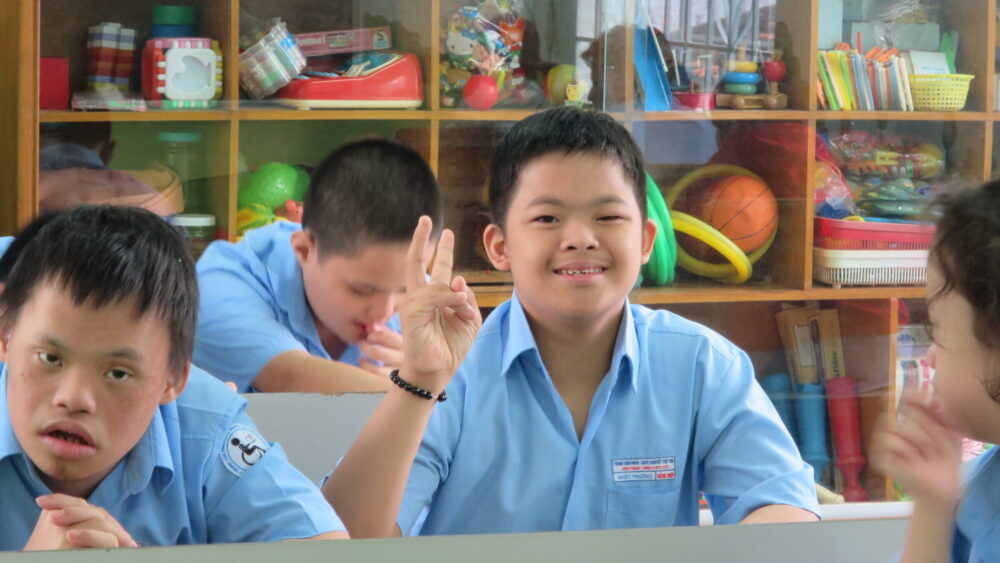
Perspectives for Children with Handicap
The goal of the project was to support children with physical or intellectual disabilities, especially those with autism, so that they could participate actively in society.

Project Background
In Vietnam itself, around 7.8 percent of the population – some 6.1 million people – live with disabilities. And the number of births of people with physical and mental disabilities is above average. This is also due to the late effects of the dioxin-containing defoliant Agent Orange, which was used by the Americans in the Vietnam War. Since the end of the war in 1975, some 150,000 children with physical and mental disabilities have been born in the country. The families of these children rarely receive financial support. Instead, they are often discriminated and stigmatized. Also due to the lack of educational facilities and infrastructure, disabled people remain restricted in their full participation in society. Without special support, they are unable to develop their potential and are denied the chance of a self-determined life.
Our Impact
Over the course of a long-term collaboration, a local organization was successfully established that now operates independently and remains dedicated to supporting children—particularly those with autism.
A strong focus was placed on developing tailored methods and concepts, which were shared with parents and educators through targeted training and workshops. Organizations, schools, and community groups were actively supported in enhancing their educational practices and infrastructure. One particularly impactful outcome was the implementation of a curriculum for children with autism. After its successful pilot at a model school, the curriculum was adopted nationwide in Vietnam under a government program. This wide-scale rollout enabled thousands of children to benefit from improved and more inclusive learning methods. A key element of the initiative was the “train-the-trainer” program, which equipped educators with the skills to adapt their teaching to the needs of children with autism.
The children received specialized speech and behavioral therapy to support their communication and independence. In parallel, parents were offered targeted training to help them better communicate with their—often non-verbal—children and foster their development at home.

